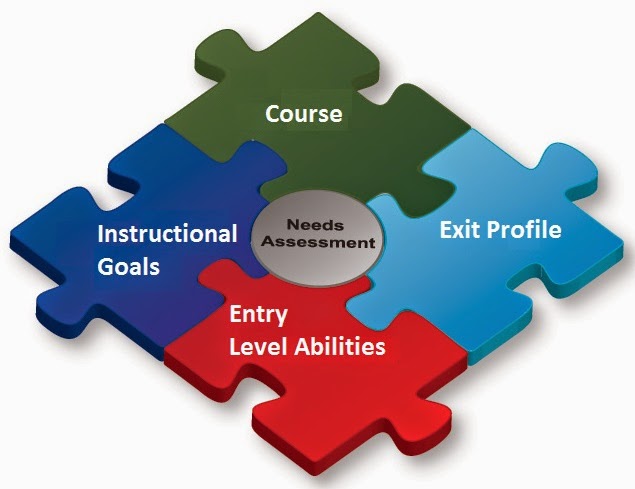Learning Objectives
in Hybrid & Blended Learning Scenarios
By Prof. Jonathan Acuña Solano
Sunday, August 31, 2014
Twitter: @jonacuso
Post 138
Learning objectives are way too
essential and transcendental for the effectiveness in guiding instructional
activities in one’s courses, which need to be aligned with the course outline
and its objectives. It is of mayor importance to comprehend that “without clear
learning objectives, a course’s activities may not directly relate to its
intended goals and desired outcomes” (Laureate Education, 2013).
Along the following chart, which was
created aligned with the previous two posts (Post 136 & Post 137), measurable
learning objectives, which are based on my former Needs Assessment, were
created. Then, it is for you –my blog’s reader- to analyze this post along with
its chart and to provide yourselves with ways to improve the clarity and
quality of your learning objectives linked to your instructional activities.
Please, review my student needs stated
before in Post 136 and the instructional goals were identified previously. The
idea behind the efficient statement of learning objectives is to visualize
their connection with the Order of Thinking Skills or Cognitive Demand that
one’s students need to accomplish each instructional goal.
Course
|
Instructional Goals
|
Exit Profile
|
Learning Objective
|
ELT
Materials Design and Multimedia
|
Ø
To have a solid knowledge in the creation/design of
EFL activities for language skills
|
ü To
have student teachers ready to design and use language activities in class
ü To
incorporate their activities as part of their lesson planning
ü
To understand the theoretical background for accurate
language activities
|
·
“Students will design an EFL reading activity
using an activity template with 90% accuracy.”
·
“Sts will understand how to incorporate their
activities in their lesson plans with 90% accuracy.”
|
Ø
To use Google Sites to create an interactive
ePortfolio that can be used with their current or future students
|
ü To
prepare student teachers to create their own site in Google as an ePortfolio
ü To
promote autonomous learning among students by creating interactive tasks
|
·
“Sts will design their site in Google to display
their activities within an ePortfolio with 100% accuracy.”
·
“Sts will design interactive exercises for their
current or future students, which will be displayed online, with at least 80%
accuracy.”
|
|
Ø
To use multi-media and freeware to create/design EFL material
|
ü To
instruct students how to embed documents, videos, etc. onto their ePortfolios
ü To
help them develop their understanding of hosting platforms such as youtube,
Scribd or Slideshare
ü To
train students on how to create their own interactive material in various
free online platforms
|
·
“Sts will embed all sorts of media in their sites
with 100% accuracy.”
·
“Students will upload to later embed media for
the interactivity of their learning tasks with 100% accuracy.”
·
“Learners will develop interactive platforms with
a 90% accuracy.
|
As noted, the ABCD Method for writing
objectives –combined with Bloom’s Taxonomy- was used to come up with suitable
behaviors that are needed to be replicated by one’s students.
Course
|
Instructional
Goals
|
Exit Profile
|
Learning
Objective
|
Course
you are currently teaching and/or that you were assigned.
|
These
are the outcome you want your students to obtain from your teaching,
guidance, and suggestions.
|
Your
instructional goals are bound to produce a given effect on your students prior
the ending of the course and that actually become part of your students' exit
profile or expected outcomes.
|
This
is part of your lesson planning that is aimed at producing the desired effect
on your students’ performance.
|
Acuña, J. (n.d.). Bloom’s Taxonomy [Tag on a
curated topic at Scoop.it].
Retrieved from the curated topic English Language Teaching Journal at http://www.scoop.it/t/english-languate-teaching/?tag=Bloom%27s+Taxonomy
Laureate Education. (2013). Learning Objectives in Hybrid
& Blended Learning Scenarios. Retrieved on 2014, April 5 from http://global.laureate.net/portal.aspx#!home/faculty
Penn State Learning Design Community
Hub. (2010). Writing Objectives. Retrieved on Saturday, August 30, 2014 from
the Penn State webpage at http://ets.tlt.psu.edu/learningdesign/objectives/writingobjectives
Pronunciation
Development
|
|
Reading Skills
Development
|
|
Curated
Topics
Online
|
|
Sunday, August 31, 2014














